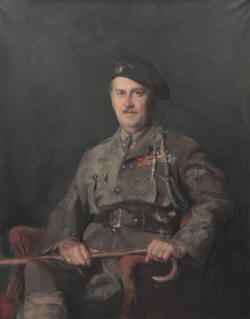

Queer Places:
Fort Ticonderoga, 102 Fort Ti Rd, Ticonderoga, NY 12883
Pell Family Cemetery
Fort Ticonderoga, Essex County, New York, USA
 Stephen Hyatt Pell (February
3, 1874 - June 22, 1950) was a member of the
Horace Walpole Society,
elected in 1937. When his brother, S. Osgood Pell, died in a car accident, he
took care of his niece, Isabell Pell.
Stephen Hyatt Pell (February
3, 1874 - June 22, 1950) was a member of the
Horace Walpole Society,
elected in 1937. When his brother, S. Osgood Pell, died in a car accident, he
took care of his niece, Isabell Pell.
Stephen Hyatt Pelham Pell was born in Flushing Meadows, Queens, New York, the son of John Howland Pell (1830–1882) and Caroline Elizabeth Hyatt (1841–1911). Pell was married to Sarah Gibbs Thompson (1878–1939), the daughter of Robert Means Thompson, a mining investor and operator founder of International Nickel,[1] the forerunner of Vale Inco. Pell was a history enthusiast and collector who restored the ruins of Fort Ticonderoga. From 1944-1949 Pell served as president of the American Numismatic Society.[2]
Fort Ticonderoga Museum founder, Stephen Hyatt Pelham Pell served two nations in World War I. In early 1917, prior to the United States’ involvement in the war, Stephen Pell enlisted in the Norton Harjes Ambulance Service attached to the Chasseurs Alpins achieving the rank of sergeant. On October 2, at Baccaret, France, after lying about his age claiming to be only 39 years old, he transferred to the American army. With the American forces Pell served at Chemin des Dames, 1917, Ourcq, 1918, and Oulchy Le Chateau where he was wounded by gunshots to the leg on August 1, 1918. As a result of the wounds, Stephen Pell was honorably discharged on May 29, 1919. In 1927 Pell was awarded the Legion of Honor by the government of France in recognition of his service to their country during the war. In March 1932 the United States awarded Pell with the Purple Heart “on account of wounds received in action August 1, 1918.”
Fort Ticonderoga preserves many objects related to Stephen Pell’s World War I service including numerous medals, correspondence and photographs taken during his military service. He wears his French uniform in his formal portrait painted in 1920. His portrait is exhibit in Fort Ticonderoga’s exhibit “The Art of War: Ticonderoga as Experienced through the Eyes of America’s Great Artists” through 2012.
He died in New York City, New York.
My published books:/p>